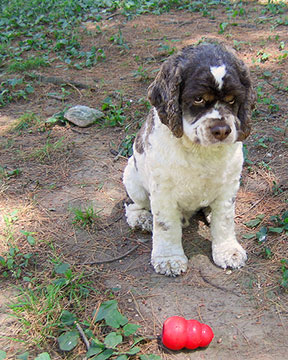Is Your Pet In Pain?
 When we hurt, we’ll likely treat it ourselves if it’s minor, or if it’s more significant we can explain it to someone else, such as a doctor, and get help from them. Our pets can hurt too, but they can’t come and tell us, at least not directly. It’s our job to understand how our pets tell us that they are in pain and then to do what’s necessary to ease their suffering.
When we hurt, we’ll likely treat it ourselves if it’s minor, or if it’s more significant we can explain it to someone else, such as a doctor, and get help from them. Our pets can hurt too, but they can’t come and tell us, at least not directly. It’s our job to understand how our pets tell us that they are in pain and then to do what’s necessary to ease their suffering.
While pain is sometimes obvious in our pets, such as when they hold up a sore leg, at other times the evidence can be very subtle. Cats are particularly inclined to hide their pain, as they see it as a sign of weakness and vulnerability. Many dogs will do their best to camouflage their pain as well.
To know when your pet is hurting, you need to watch for subtle changes in behaviour and appearance that might indicate he is in pain. It’s vital to always be alert to these signs, as quick action and treatment is the best way to allow your dog or cat to heal and resume their normal, happy life.
Following is a fairly comprehensive list of the signs that your pet may be in pain. None of these alone is conclusive evidence, but a combination may well be indicative. You know your pet best, and therefore you are in the best position to know when he might be in pain.
Vocalization
- grunting or groaning
- whining or crying
- howling or whimpering
- yelping or growling when touched
- lack of vocalization when they normally would
 Hiding (mostly in cats)
Hiding (mostly in cats)
- withdrawal from social interaction
- not coming out to eat
Posture Changes
- shifting position more frequently than normal
- hunched up
- sitting or lying in an abnormal position
- preferring lying to sitting or standing
 Abnormal Movement
Abnormal Movement
- difficulty getting up from lying or sitting
- lagging behind or tiring on walks
- limping, or not putting weight on a limb
- reluctance to go for walks or climb stairs or jump up
- reluctance to move at all
- repeatedly getting up and lying down
Breathing
- panting excessively, especially when resting
Changes in Behaviour
- out-of-character aggressiveness
- growling, hissing, biting, especially when touched
- unusual lack of responsiveness to situations, such as playing with a ball, or going for a walk
- avoiding being held or picked up
 seeking more affection than normal
seeking more affection than normal- changes in bladder or bowel habits
- excessive sleeping
- restlessness
- shivering or trembling
Appetite
- changed, most likely decreased
Grooming
- coat lacking its normal shine
- unkempt appearance
- licking, biting, or scratching a particular part of the body
Expression
- staring vacantly
- grimacing
- glazed, wide eyed
- flattened ears
- enlarged pupils
- excessive grooming
Remember that the most important thing to notice is when your pet is not acting normally. Our cats and dogs are usually quite predictable, so when they act or appear differently than usual, it may be that they are in pain.
 What To Do
What To Do
It might be tempting to give human over-the-counter pain medications such as ibuprofen, acetaminophen, or aspirin to your pet. But the possibility of unforeseen side effects and the uncertainly of determining the correct dose is enough reason not to do so. Take your cat or dog to your veterinarian, get a full and complete diagnosis, and work with them to determine the best course of treatment.


